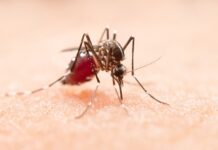A 17-year-old girl from Assam succumbed to suspected Guillain-Barre Syndrome (GBS) at Pratiksha Hospital in Guwahati. Hospital officials confirmed this as the first fatality of its kind in Assam since the end of November. However, an official confirmation from the state health department is still awaited.
As reported by economictimes, the girl was admitted on January 21 with GBS symptoms and had a history of diarrhea a week before hospitalization. She remained on a ventilator for 11 days before passing away on January 31. Her parents, originally from Bihar, had planned to transfer her to Delhi for advanced treatment via air ambulance, but her deteriorating condition made the move impossible.
Understanding Guillain-Barre Syndrome
GBS is a rare but treatable neurological disorder where the immune system attacks the nerves, causing weakness in the limbs, neck, face, and eyes. Severe cases can lead to difficulty in walking, swallowing, or even breathing.
Doctors note that the exact cause of GBS is often inconclusive. However, studies suggest it can follow infections such as Campylobacter jejuni, cytomegalovirus (CMV), and Epstein-Barr virus (EBV). The condition can progress rapidly over four weeks, with severe cases requiring ICU admission and ventilatory support. Treatment typically involves intravenous immunoglobulin (IVIg) therapy or plasma exchange.
Rising Cases in Maharashtra
Meanwhile, Maharashtra has reported five suspected GBS deaths, with the latest being a 60-year-old man from Pune’s Warje area. The state has recorded 149 suspected cases, with 124 confirmed diagnoses. Pune and its surrounding areas have reported the highest number of cases, with 29 patients in Pune city, 82 in newly added villages, 17 in Pimpri Chinchwad, 13 in Pune Rural, and 8 in other districts.
Possible Causes and Water Contamination Concerns
Health officials have linked the outbreak in Pune to contaminated water sources. Out of 160 water samples tested from Pune, eight were found to be contaminated, including those containing Escherichia coli (E. coli), a bacteria indicating fecal contamination. Studies suggest that exposure to E. coli may contribute to GBS development.
A Global Perspective on GBS Outbreaks
Historically, GBS has been considered a sporadic disorder rather than an epidemic-causing condition. However, outbreaks have occurred, with Peru experiencing the worst flare-up in 2019, recording 1,120 cases in a year. In contrast, India reports an annual incidence of 1.75 to 2 cases per lakh population.
A 2021 study published in the Journal of Neuroinflammation analyzed GBS prevalence from 1990 to 2019. It found that Japan, Singapore, South Korea, the U.S., and Mexico had higher-than-expected burdens, while China, Fiji, Taiwan, and Guam had lower rates. Researchers linked increased prevalence to infections caused by Haemophilus influenzae, CMV, Zika virus, and respiratory or gastrointestinal illnesses.
The Need for Epidemiological Studies
Experts stress the need to study common factors among patients to understand why GBS cases are emerging as localized outbreaks. Dr. Gajanan Velhal, Head of Community Medicine at B.K.L. Walawalkar Rural Medical College, emphasized the importance of identifying links between affected individuals to determine potential environmental or microbial causes.
With cases rising in Maharashtra and now a fatality in Assam, health officials must intensify efforts to investigate the causes and contain the spread. Studying water contamination, bacterial infections, and patient history could help prevent further cases. Increased awareness, early detection, and better public health measures are essential to managing and mitigating the impact of GBS in India.
























